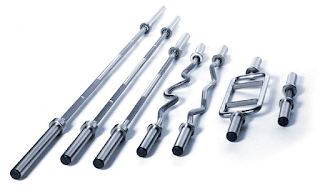Scaffolding Smarts: How Suppliers Are Revolutionizing Safety and Efficiency in Construction?
In the ever-evolving construction landscape, scaffolding has steadily transitioned from being merely a functional necessity to a critical component influencing project safety, efficiency, and cost-effectiveness. Modern scaffolding suppliers are not just providing basic structures; they are innovating with lightweight materials, modular designs, and smart technology to redefine the standards for safety and operational efficiency on construction sites. This transformation is central to enhancing productivity, safeguarding workers, and providing considerable benefits to both builders and project timelines.
Lightweight Materials: A Game Changer
The introduction of advanced lightweight materials, including aluminum and high-strength composites, has transformed traditional scaffolding practices. In contrast to traditional steel scaffolding, which tends to be bulky and heavy, these new materials provide both resilience and strength without the excessive weight found in steel structures. For example, companies like Layher have created aluminum scaffolding systems that are much lighter while still offering strong performance capabilities. This innovation not only improves transportation and setup efficiency but also lessens the physical burden on workers, which can lead to reduced fatigue and lower the risk of accidents. Furthermore, lightweight materials allow for the installation of scaffolding in locations and projects that were once considered unfeasible. The ease of handling these systems can result in faster installation times, thus enhancing overall project timelines. For contractors, this could mean potential long-term cost savings.
Modular Designs: Efficiencies in Configuration
Modular scaffolding systems represent a notable innovation that is transforming the construction industry. Emphasizing adaptability, these systems can be configured effortlessly to meet diverse structural and project needs. Companies like PERI are leading the way in developing modular scaffolding that can accommodate various building shapes and dimensions. This capacity to tailor scaffolding designs minimizes waste and promotes reuse across different projects.
A practical example of this is the modular scaffolding system implemented for the construction of The Edge, a corporate facility in Amsterdam. The project employed a versatile scaffolding arrangement that adjusted to the building's distinctive architectural features. This cutting-edge solution not only facilitated efficient construction but also allowed for the accommodation of unexpected changes throughout the project without causing major delays.
The modular approach also significantly enhances safety. Each component is manageable by workers, reducing the risks linked with bulky setups. Additionally, because components are standardized, the quality assurance from manufacturing becomes more evident, leading to increased safety for workers who depend on these structures to carry out their tasks securely.
Smart Technology: Monitoring and Safety
Perhaps the most striking transformation in scaffolding is the integration of smart technology, particularly in stability and safety monitoring. Companies like Brand Safe way have been at the forefront of this development, introducing scaffolding systems equipped with sensors that monitor structural integrity and environmental conditions in real time. These sensors can detect movement, weight distribution, and environmental changes, alerting crews to potential safety hazards before they escalate.
The implementation of such smart technology not only enhances the immediate safety of workers but also provides invaluable data for project managers. For instance, the ability to monitor the scaffolding’s condition in real-time allows for more informed decisions about how long certain structures can remain in place, potentially reducing downtime and optimizing labor resources.
Real-World Success Stories
One glaring example of how these innovations have paid off can be seen in the construction of the Hudson Yards project in New York City. Scaffolding suppliers provided lightweight, modular systems accompanied by smart sensors that collected data throughout the construction process. The result was a 30% reduction in scaffolding labor costs and a drastic decrease in setup and take-down time.
Similarly, at the Apple Park campus in Cupertino, California, innovative scaffolding designs with integrated safety technologies contributed to the project’s iconic fluid architecture while ensuring the safety of thousands of workers on site. The adaptability of the modular scaffolding reduced overall construction time and played a critical role in achieving one of the smoothest turnkey completions seen in modern construction.
Conclusion
Modern scaffolding suppliers are at the forefront of improving safety and operating efficiency with lightweight materials, modular designs, and state-of-the-art smart technology as building continues to push boundaries. These developments result in practical advantages for builders, laborers, and project schedules, lowering expenses, boosting security, and encouraging an agile building methodology. Scaffolding will surely be crucial in establishing a new era of building where efficiency and safety are the top priorities as the sector develops further. In this changing environment, adopting these changes is not only a decision; it is a must for construction methods that are prepared for the future.



Comments
Post a Comment